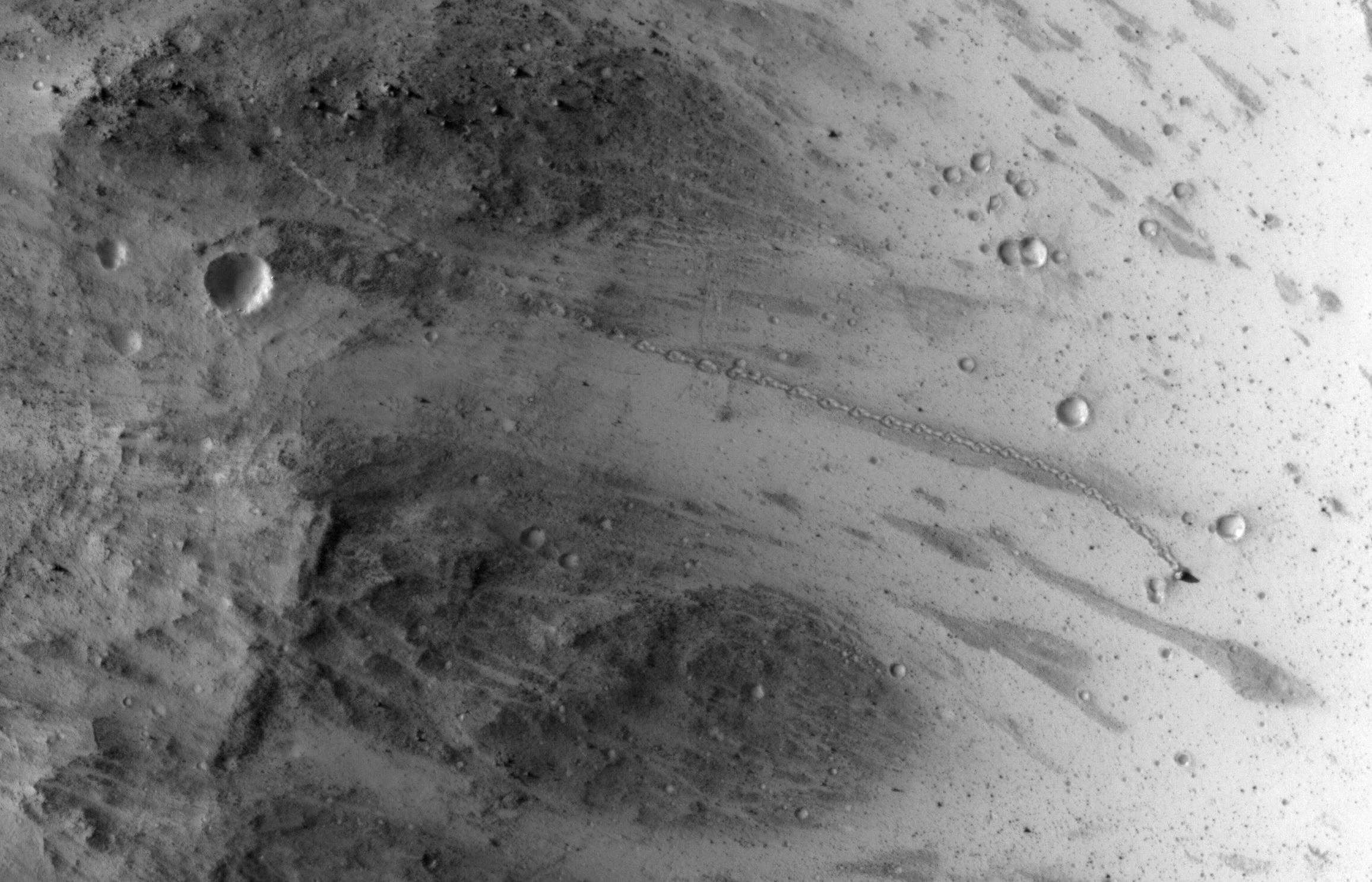If the Mars rover Curiosity had been equipped with lights, would it be able to drive or do other work in the evening? This could be some combination of LED headlights, wheel-lights, and/or a spotlight on the movable robotic arm,
Since the chances of a deer crossing in front of the rover are pretty remote, and in general the rocks stay put (although there are notable exceptions! see below) they'd only have to flash maybe once per second or even less most of the time. Most efficient LED lights are pulse width modulated anyway, and LED flash units for cameras exist, so this would not necessarily represent a large power drain.
There are two sources of heat already available on board Curiosity to potentially keep things within operational temperatures - the circulating fluids warmed indirectly by thermal infrared radiation from the MMRTG, and electrical heaters powered by the MMRTG electrical output directly. And of course the presence of the MMRTG means that Curiosity (unlike previous Mars rover designs) does not rely on daylight for electrical power. Although I don't know if these are sufficient to enable evening operations. I'm thinking there is residual warmth in the spacecraft and Martian surface in the evening (as opposed to the morning)
I'm not suggesting that this is a good idea for the Curiosity mission, this would add complexity, weight, and risk with marginal benefits. However it seems to me this could be done, though there may be factors I haven't considered. There will be future rover missions on Mars and other bodies, so I am asking about a Curiosity-with-lights as a reference point.
below: Things do occasionally move on Mars. From Tall boulder rolls down martian hill, lands upright, "The High Resolution Imaging Science Experiment (HiRISE) camera on NASA's Mars Reconnaissance Orbiter recorded this view on July 3, 2014." Click for larger view.
